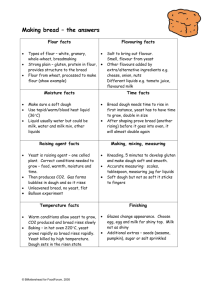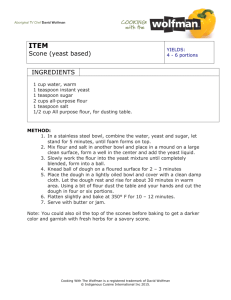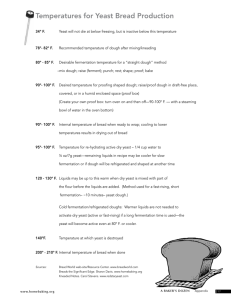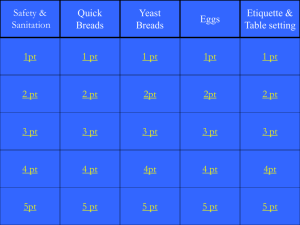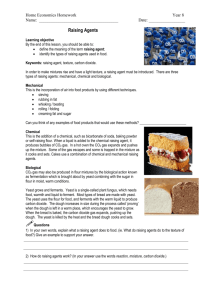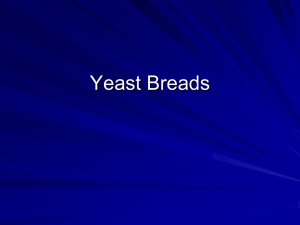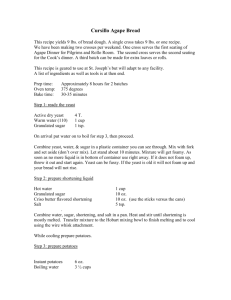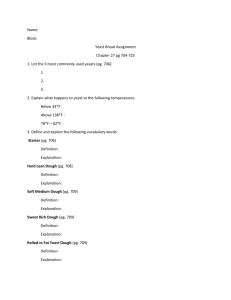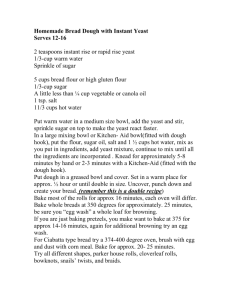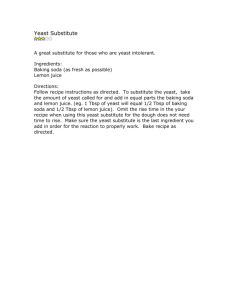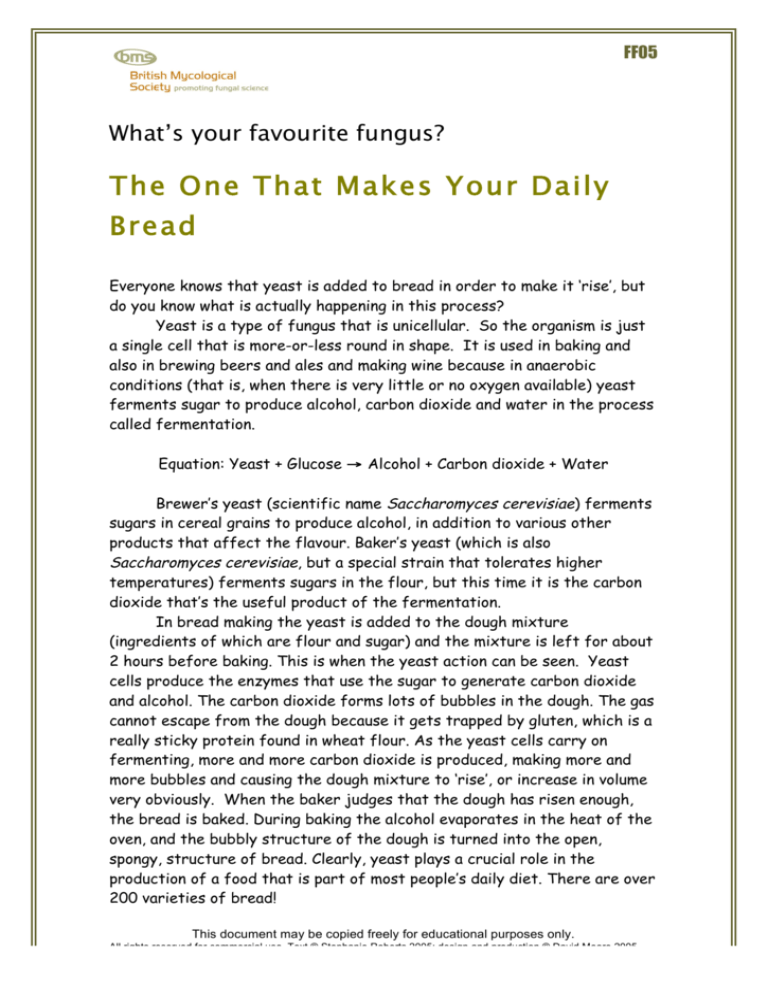
FF05
What’s your favourite fungus?
The One That Makes Your Daily
Bread
Everyone knows that yeast is added to bread in order to make it ‘rise’, but
do you know what is actually happening in this process?
Yeast is a type of fungus that is unicellular. So the organism is just
a single cell that is more-or-less round in shape. It is used in baking and
also in brewing beers and ales and making wine because in anaerobic
conditions (that is, when there is very little or no oxygen available) yeast
ferments sugar to produce alcohol, carbon dioxide and water in the process
called fermentation.
Equation: Yeast + Glucose → Alcohol + Carbon dioxide + Water
Brewer’s yeast (scientific name Saccharomyces cerevisiae) ferments
sugars in cereal grains to produce alcohol, in addition to various other
products that affect the flavour. Baker’s yeast (which is also
Saccharomyces cerevisiae, but a special strain that tolerates higher
temperatures) ferments sugars in the flour, but this time it is the carbon
dioxide that’s the useful product of the fermentation.
In bread making the yeast is added to the dough mixture
(ingredients of which are flour and sugar) and the mixture is left for about
2 hours before baking. This is when the yeast action can be seen. Yeast
cells produce the enzymes that use the sugar to generate carbon dioxide
and alcohol. The carbon dioxide forms lots of bubbles in the dough. The gas
cannot escape from the dough because it gets trapped by gluten, which is a
really sticky protein found in wheat flour. As the yeast cells carry on
fermenting, more and more carbon dioxide is produced, making more and
more bubbles and causing the dough mixture to ‘rise’, or increase in volume
very obviously. When the baker judges that the dough has risen enough,
the bread is baked. During baking the alcohol evaporates in the heat of the
oven, and the bubbly structure of the dough is turned into the open,
spongy, structure of bread. Clearly, yeast plays a crucial role in the
production of a food that is part of most people’s daily diet. There are over
200 varieties of bread!
This document may be copied freely for educational purposes only.
All rights reserved for commercial use. Text © Stephanie Roberts 2005; design and production © David Moore 2005.
FF05
This document may be copied freely for educational purposes only.
All rights reserved for commercial use. Text © Stephanie Roberts 2005; design and production © David Moore 2005.

